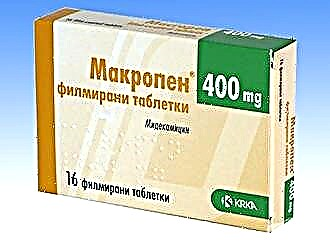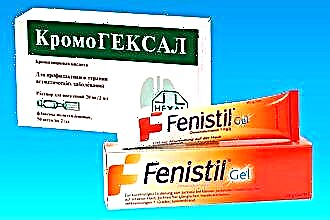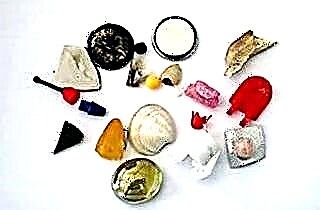Maxillary sinusitis is a disease in which the mucous membranes of the adnexal chambers of the nose are affected. However, in this case, the symptoms are not limited only to the affected organ, the clinical picture shows that intoxication covers the entire human body. Treatment of sinusitis in adults and children is always complex and includes the use of medications, surgical interventions and physiotherapy procedures. Let us dwell in more detail on what sinusitis is and how to cure sinusitis once and for all.
The main symptoms and directions of therapy for sinusitis
 Maxillary sinusitis can start for a variety of reasons. The most common are: viral infiltration due to respiratory diseases, bacterial infections, allergic reactions, trauma and transmission of infections from the affected teeth. The treatment regimen for sinusitis depends on the correct diagnosis. Sinusitis itself and its possible complications are dangerous.
Maxillary sinusitis can start for a variety of reasons. The most common are: viral infiltration due to respiratory diseases, bacterial infections, allergic reactions, trauma and transmission of infections from the affected teeth. The treatment regimen for sinusitis depends on the correct diagnosis. Sinusitis itself and its possible complications are dangerous.
Maxillary sinusitis has the following characteristic symptoms:
- Discharge from the nose. The initial stage is marked by transparent and liquid snot, while their staining in green indicates the presence of bacterial microflora, and in yellow, of the current purulent process. The color of the snot is often a marker showing how to properly treat sinusitis.
- Painful sensations in the area of the affected sinus, become stronger when the head is tilted, can be given to the neck, ear, eyes, teeth, or spread all over the head.
- Disturbance of nasal breathing and nasal congestion, often alternating.
- Fever, chills, hyperthermia up to 38.5-39 degrees.
- Vileness of the voice.
- Bad breath and toothache with odontogenic sinusitis.
- Weakness, lethargy, low efficiency, weakness.
When deciding how to cure sinusitis, one should dwell on the main tasks of therapy. First aid for sinusitis requires the following actions:
- Stop the reproduction of pathogenic microflora and ensure the gradual complete elimination of it.
- Remove swelling of the anastomoses to restore drainage and air exchange in the accessory pockets.
- Provide effective drainage of exudate from the sinuses and nasal passages.
- Suppress the inflammation of the maxillary sinuses and prevent irreversible changes in the mucous membranes.
- Ease the patient's condition by easing the symptoms of the disease: headache, fever, muscle aches.
How is the disease diagnosed?
Effective treatment of sinusitis largely depends on factors such as timely detection of the disease and the fastest possible visit to the doctor. The initial stage of sinusitis is mainly treated without punctures and antibiotics. In the timely start of therapy lies the answer to the question of whether sinusitis can be cured forever.
An otolaryngologist can diagnose maxillary sinusitis based on a history and  visual examination of the nasal cavity using a rhinoscope. The use of a video endoscope is practiced, which makes it possible to more closely examine the nasal cavity.
visual examination of the nasal cavity using a rhinoscope. The use of a video endoscope is practiced, which makes it possible to more closely examine the nasal cavity.
The most complete information about the disease is provided by modern diagnostic methods such as fluoroscopy and computed tomography. To obtain a three-dimensional picture of the state of the affected sinus, frontal (in direct projection) and lateral pictures are taken. They show the condition of the maxillary and frontal sinuses, the presence of a horizontal level of mucus in them or a parietal thickening of the epithelial cover.
For more information, the doctor may send the patient for an allergy test, dental examination, or immunogram. In difficult cases, when it is not clear what type of sinusitis and how to treat it, it is necessary to do a diagnostic puncture with the collection of the contents of the chamber for bacteriological analysis.
Modern methods of treating sinusitis include the use of antibiotics and other pharmaceuticals, washing of air pockets with the help of special devices, physiotherapy, surgical interventions and non-traditional methods of treatment using traditional medicine.
Timeliness, competence and complexity are the main conditions for getting rid of sinusitis forever.
Antibiotic therapy for sinusitis
With the reproduction of bacterial microflora, the treatment of sinusitis in adults and children is necessarily carried out with the use of drugs that have a strong bactericidal effect. Before treating sinusitis with antibiotics, it is advisable to take a smear from the inner wall of the nasal passage for bacterial culture to accurately determine the causative agent of the disease and select the necessary medication. However, more often than not, there is not enough time for a full analysis, and the otolaryngologist prefers to cure the process that has begun by prescribing a remedy that can have a depressing effect on the widest possible spectrum of bacteria.
Among antibiotics, the following drugs are widely used in otolaryngology:
- Unprotected and protected penicillins (Amoxicillin, Flemoxin solutab, Amoxiclav) in tablets. However, due to non-compliance with treatment protocols and unreasonable prescription of antibiotics, increased resistance to penicillins has been observed in some regions.
 Macrolides (azalides) such as Macropen, Azithromycin. They are often used for long-term use in chronic sinusitis.
Macrolides (azalides) such as Macropen, Azithromycin. They are often used for long-term use in chronic sinusitis.- Cephalosporins are prescribed in the form of injections and for oral administration. Cefazolin (first-line agent), is used less and less, the most effective drug is Ceftriaxone, which can be injected once a day.
- Fluoroquinolones. Strong drugs that can fight gram-negative bacteria and some strains of pneumococci and staphylococci.
For mild disease, the local antibiotic fusafungin is used in the form of an aerosol (Bioparox). If a more complex sinusitis is observed, and treatment is carried out with systemic antibiotics, then Bioparox can be used as an adjuvant.
Often people, not knowing how to quickly cure sinusitis, on their own, without consulting a doctor, start taking antibiotics available at home at random. It is categorically impossible to do this, since the fungal or viral form of the disease does not respond to the effects of these drugs, and the patient's condition may continue to deteriorate.
It is also possible to develop resistance of the pathogen to the drug due to an incomplete course of therapy.
Using other medications
The fight against sinusitis is not limited solely to taking antibiotics. There are a number of other remedies that reduce the symptoms of the disease and contribute to the speedy recovery of the patient. Modern treatment of sinusitis involves the use of mucolytics, decongestants, antiseptics, antipyretic and anti-inflammatory drugs. We need to dwell on them in more detail.
Decongestants. Their main purpose is to reduce the swelling of the mucous membranes and to stop the inflammatory process at the local level. According to their effect, they can be as follows:
- Vasoconstrictor aerosols and nasal drops. Eliminate puffiness and temporarily resume breathing through the nose. Depending on the active ingredient (naphazoline, xylometazoline or oxymetazoline), their effect can last 3-4 hours (Sanorin, Naphtizin), up to 6 hours (Galazolin), up to 12 hours (Nazol, Nazivin).
- Combined medicines. In addition to the vasoconstrictor, they also have another effect: antiallergenic (Vibrocil), local bactericidal (Izofra, Polydexa).
- Glucocorticosteroids.Hormone-based drugs that have a complex effect on the causes
 diseases (Amavis, Nasonex). Effective in the treatment of allergic sinusitis.
diseases (Amavis, Nasonex). Effective in the treatment of allergic sinusitis. - Oil drops for the protection and restoration of the epithelium. They do not have a pronounced vasoconstrictor effect, but they can be used for a longer time and have fewer contraindications (Pinosol).
Mucolytics. They affect the viscosity of mucus, which makes it easier to evacuate from the sinuses. Available as tablets or syrups. The most famous and popular are funds based on acetylcysteine (ACC) and ambroxol. Plant-based preparations are also prescribed: licorice root syrup, Sinupret and Sinuforte (with root extract and cyclamen juice).
Antipyretic and pain relievers. If sinusitis is accompanied by hyperthermia and painful sensations, then you can use the most famous drugs that can improve the patient's condition. These include syrups and tablets based on acetylsalicylic acid (Aspirin), ibuprofen (Nurofen, Ibuprofen) and paracetamol (Panadol, Paracetamol). Ibuklin is also used - a combination of ibuprofen and paracetamol. It is important to pay attention to the contraindications and features of the use of a particular agent.
Antiseptics. Used to rinse the nasal cavity and accessory pockets.
Inexpensive and reliable drugs for this procedure are Miramistin and Furacilin, which are used both at home and in the hospital. If irrigation with Dioxidin is prescribed, then this manipulation is controlled by a doctor and is used mainly to treat sinusitis in an adult patient.
Immunomodulators. Considering options for how to cure sinusitis, one should not forget that this disease primarily affects people with weakened immunity. Therefore, strengthening the response of the body is an important factor. Immunomodulators such as interferon, echinacea, thymus, ginseng or cinnabsin are available at the pharmacy. When taking them, you need to follow the instructions exactly to prevent the development of the opposite effect.
Rinsing the nose for sinusitis by different methods
One of the most progressive methods for treating sinusitis is flushing the air chambers using specially designed devices. Timely initiation of such procedures can prevent the need for a puncture or heavy antibiotics. It helps well with sinusitis in adults, treatment by flushing with the use of a YAMIK catheter and an aspirator-suction. For children, such rinses are prescribed with caution and not earlier than when they reach the age of six.
With the help of the YAMIK catheter, purulent accumulations are pulled out from the affected sinus, creating a kind of vacuum in the nasal cavity. A thin space is created by overlapping the nasopharynx and nasal passage with inflatable balloons on a flexible tube. The cannula located on the front cuff of the device makes it possible to suck out the secretion mixed with pus with a syringe, and then pour the necessary medications into the sinus. All actions are performed by an otolaryngologist, and the patient is given local anesthesia.
The cuckoo washing option is simpler than the previous one. The doctor needs a syringe without a needle to pour the solution into one nostril and a special aspirator to suck out the liquefied exudate from the other nostril. The intermittent pressure provided by the aspirator helps fluid flow into the sinus and wash over the mucous membranes. It is necessary to get rid of pus within several procedures and in parallel with this, use other methods of treating sinusitis.
The flow-through method of rinsing is the simplest; it is usually used by patients with sinusitis who are treating it at home. For irrigation, they will need a medical bulb or syringe without a needle. The head tilts to the side, the liquid flows into the upper nostril and flows out of the lower one, then the manipulation is repeated after tilting to the other side. The easiest way is to make a solution from half a teaspoon of salt, dissolved in a glass of boiled warm water, and 2-3 drops of iodine.
Surgery for sinusitis
Understanding the question of how to cure sinusitis forever, one must remember that attempts to be treated only with pills in an acute purulent form of the disease can lead to the development of complications or to the transition of the disease to a sluggish stage. A severe course of the disease, the presence of a large amount of pus, severe pain is a signal that urgent surgical intervention is needed.
In the practice of otolaryngology, a puncture is the most common operation. It gives a quick result, which is noticeable within a few minutes after the puncture. After local anesthesia, the sinus wall is pierced in a thin place with a thick needle with a slightly bent tip. A solution is injected through a needle to thin the mucus, all accumulations are removed, and antibiotics, mucolytics and other drugs are injected into the sinus.
For a significant improvement in the patient's condition, 2-3 punctures are usually sufficient. This minimally invasive operation is shrouded in a mass of fears and speculation. So, it is believed that having healed a puncture from sinusitis once, you will have to do it constantly. This is not true. How to defeat sinusitis is best known by a doctor who develops a treatment regimen based on the available information.
In the most advanced cases, when irreversible changes occur in the tissues of the sinus, puncture may not help either. Then a much more complex operation is used - sinusitis, in which part of the sinus wall is removed, and the affected epithelial layer is scraped out with special instruments. This operation is carried out quite rarely, since the development of modern pharmacology and new techniques (for example, the spread of endoscopic intervention) makes it possible to prevent the development of the disease to such a difficult stage.
Folk ways to get rid of sinusitis
Many people believe that sinusitis can be cured on their own without going to the hospital. This is a serious mistake. The use of traditional medicine is permissible only at the very beginning of the disease or as an auxiliary component of conservative therapy. The doctor should advise the patient what to do with sinusitis, it is possible and what not. At the same time, there are a number of proven folk ways to overcome the disease.
Warming up the sinuses. At the catarrhal stage of the disease, the effect on the sinus tissue with dry heat helps. This improves local blood circulation and attracts a large number of leukocytes to the affected organ. It is best to warm your sinuses with a blue lamp, boiled egg, or bags of hot salt. Compresses of wax, decoction of bay leaves, and garlic have long been known. Unfortunately, some people warm up acute sinusitis, which is strictly prohibited.
Nasal drops. For their manufacture, biologically active natural ingredients are taken, such as propolis, honey, freshly squeezed juices of black radish, onions, beets, berries. You can instill a solution of cyclamen root juice or hydrogen peroxide.
Steam inhalation improves nasal breathing and softens mucus clots. Boiled potatoes can be used to breathe hot steam. Decoctions of medicinal herbs (chamomile, sage, yarrow) or essential oils (pine, mint, eucalyptus) added to boiling water are popular. Inhalations are carried out daily for 10-15 minutes during the week.
Homemade ointments are placed in the nasal passages on tampons or turundas. For the manufacture of ointments, juices of aloe, onions, laundry soap, propolis can be used.

 Macrolides (azalides) such as Macropen, Azithromycin. They are often used for long-term use in chronic sinusitis.
Macrolides (azalides) such as Macropen, Azithromycin. They are often used for long-term use in chronic sinusitis. diseases (Amavis, Nasonex). Effective in the treatment of allergic sinusitis.
diseases (Amavis, Nasonex). Effective in the treatment of allergic sinusitis.

